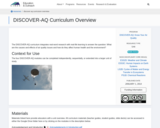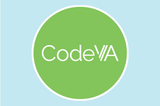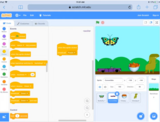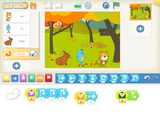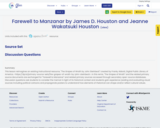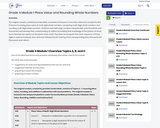Unit 2 opens students’ eyes to some of the most important content students will learn in Grade 3—multiplication and division. In this unit, “students begin developing these concepts by working with numbers with which they are more familiar, such as 2s, 5s, and 10s, in addition to numbers that are easily skip counted, such as 3s and 4s,” allowing the cognitive demand to be on the concepts of multiplication and division themselves rather than the numbers (CCSS Toolbox, Sequenced Units for the Common Core State Standards in Mathematics Grade 3). Then in Unit 3, students will work on the more challenging units of 0, 1, 6–9, and multiples of 10.
In Grade 2, students learned to count objects in arrays using repeated addition (2.OA.4) to gain a foundation to multiplication. They’ve also done extensive work on one- and two-step word problems involving addition and subtraction, having mastered all of the problem types that involve those operations (2.OA.1). Thus, students have developed a strong problem-solving disposition and have the foundational content necessary to launch right into multiplication and division in this unit.
At the start of this unit, students gain an understanding of multiplication and division in the context of equal group and array problems in Topic A. To keep the focus on the conceptual understanding of multiplication and division (3.OA.1, 3.OA.2), Topic A does not discuss specific strategies to solve, and thus students may count all objects (a Level 1 strategy) or remember their skip-counting and repeated addition (Level 2 strategies) from Grade 2 to find the product. In Topics B and C, however, the focus turns to developing more efficient strategies for solving multiplication and division, including skip-counting and repeated addition (Level 2 strategies) as well as “just knowing” the facts, which works toward the goal that “by the end of grade 3, [students] know from memory all products of two single-digit numbers and related division facts” (3.OA.7). As the Operations and Algebraic Thinking Progression states, “mastering this material and reaching fluency in single-digit multiplications and related division may be quite time consuming because there are no general strategies for multiplying or dividing all single-digit numbers as there are for addition or subtraction” (OA Progression, p. 22). Thus, because “there are many patterns and strategies dependent upon specific numbers,” they first work with factors of 2, 5, and 10 in Topic B, since they learned these skip-counting sequences in Grade 2. Then in Topic C, they work with the new factors of 3 and 4. Only then, when students have developed more familiarity with these factors, will students solve more complex and/or abstract problems with them, including determining the unknown whole number in a multiplication or division equation relating three whole numbers (3.OA.4) and solving two-step word problems using all four operations (3.OA.3, 3.OA.8), assessing the reasonableness of their answers for a variety of problem types in Topic D.
Throughout the unit, students engage in a variety of mathematical practices. The unit pays particular attention to reasoning abstractly and quantitatively, as students come to understand the meaning of multiplication and division and the abstract symbols used to represent them (MP.2). Further, students model with mathematics with these new operations, solving one- and two-step equations using them (MP.4).

